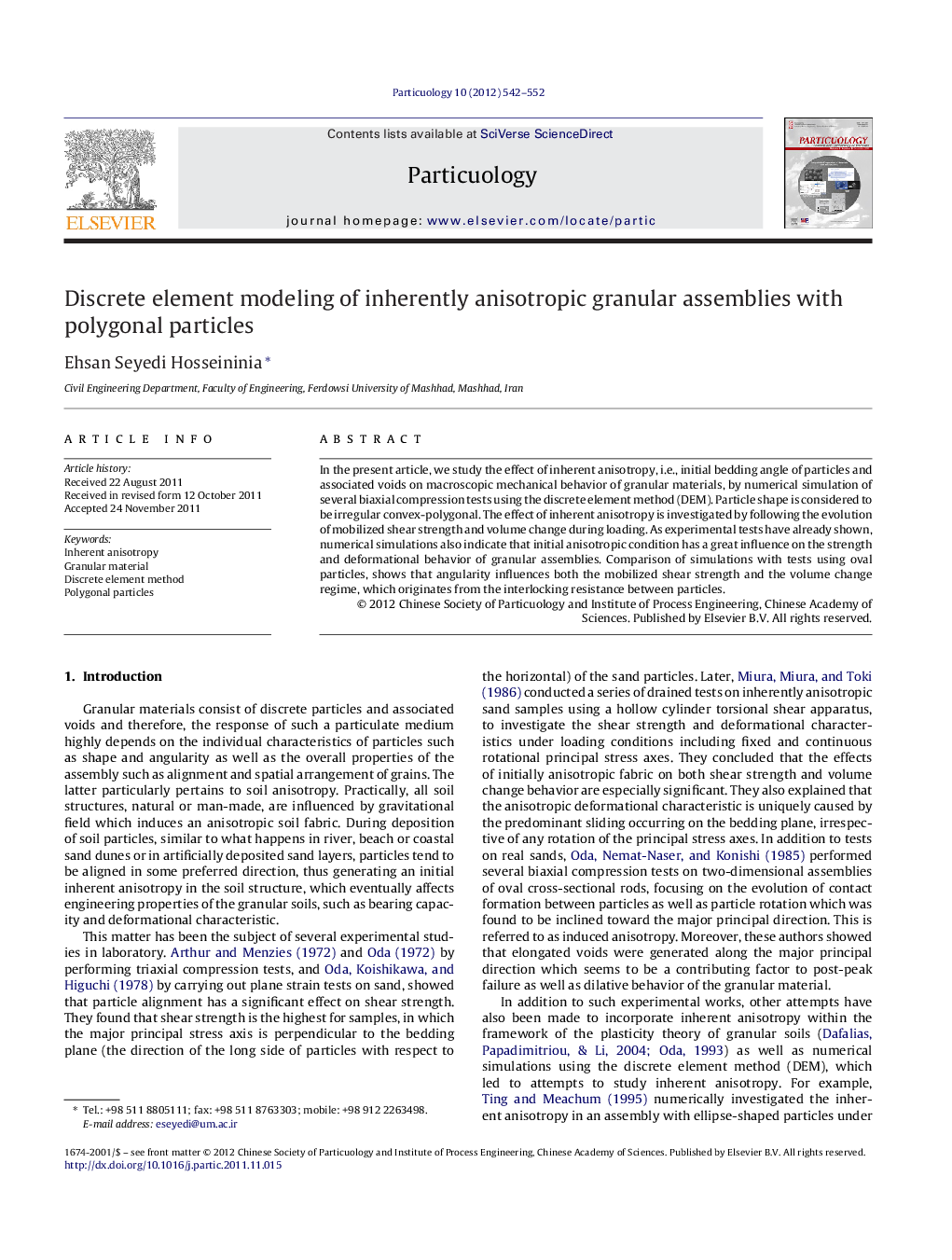| کد مقاله | کد نشریه | سال انتشار | مقاله انگلیسی | نسخه تمام متن |
|---|---|---|---|---|
| 672211 | 887491 | 2012 | 11 صفحه PDF | دانلود رایگان |

In the present article, we study the effect of inherent anisotropy, i.e., initial bedding angle of particles and associated voids on macroscopic mechanical behavior of granular materials, by numerical simulation of several biaxial compression tests using the discrete element method (DEM). Particle shape is considered to be irregular convex-polygonal. The effect of inherent anisotropy is investigated by following the evolution of mobilized shear strength and volume change during loading. As experimental tests have already shown, numerical simulations also indicate that initial anisotropic condition has a great influence on the strength and deformational behavior of granular assemblies. Comparison of simulations with tests using oval particles, shows that angularity influences both the mobilized shear strength and the volume change regime, which originates from the interlocking resistance between particles.
Variations of mobilized shear strength and volumetric strain of inherently anisotropic granular assemblies with axial strain.Figure optionsDownload as PowerPoint slideHighlights
► Biaxial compression tests were performed using DEM on inherently anisotropic granular assemblies with polygonal particles.
► Initial bedding angle has a great influence on the mobilized shear strength and volume change during loading.
► Particle angularity influences both the mobilized shear strength and the volume change response, which originates from the interlocking resistance between particles.
Journal: Particuology - Volume 10, Issue 5, October 2012, Pages 542–552